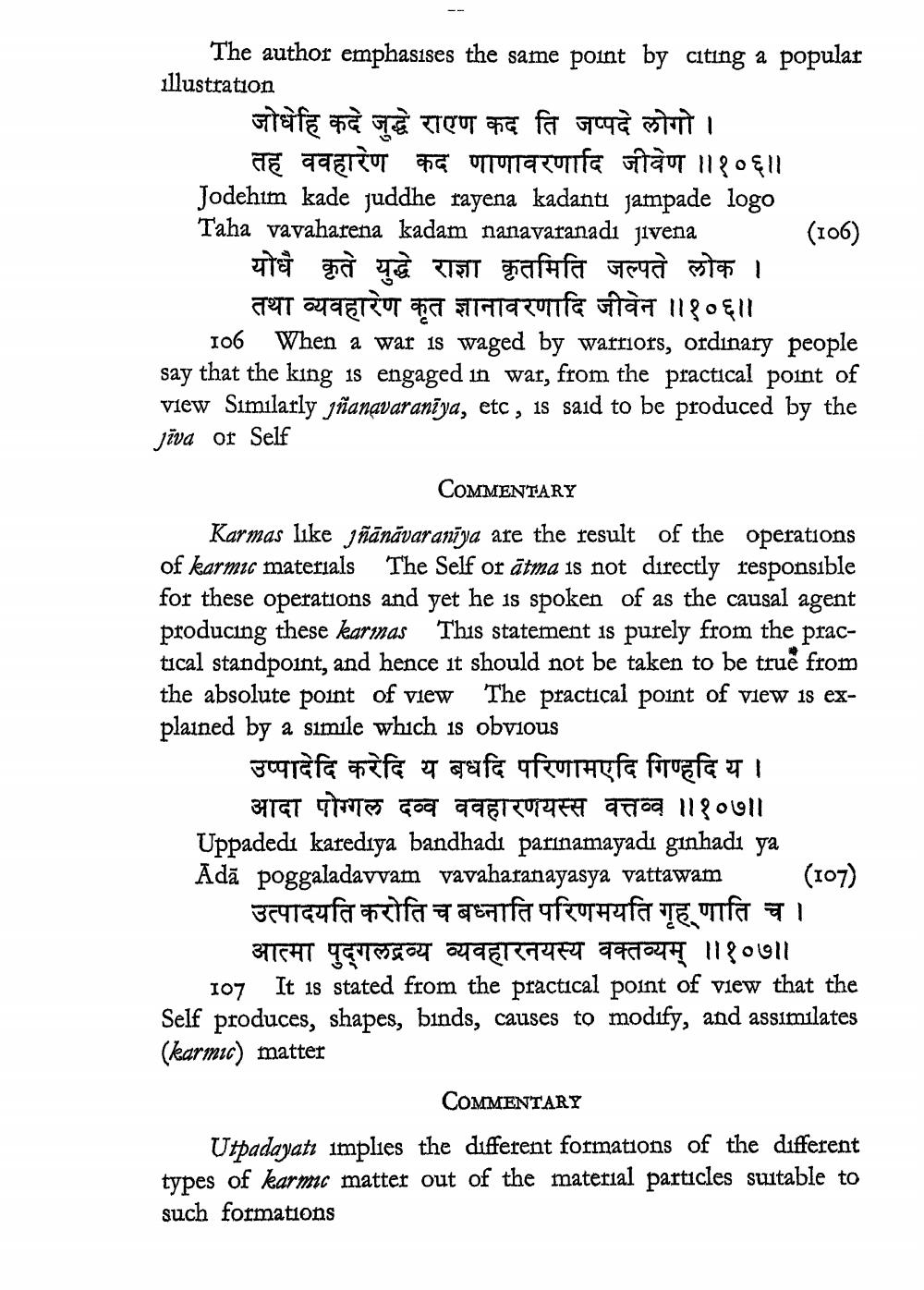________________
The author emphasises the same point by citing a popular illustration
जोधेहि कदे जुद्धे राएण कद ति जप्पदे लोगो।
तह ववहारेण कद णाणावरणादि जीवेण ॥१०६॥ Jodehim kade juddhe rayena kadanti jampade logo Taha vavaharena kadam nanavaranadi jivena (106)
योधै कृते युद्धे राज्ञा कृतमिति जल्पते लोक ।
तथा व्यवहारेण कृत ज्ञानावरणादि जीवेन ॥१०६॥ 106 When a war is waged by warriors, ordinary people say that the king is engaged in war, from the practical point of view Similarly.jianavaraniya, etc, is said to be produced by the jiva or Self
COMMENTARY Karmas like jñānāvaranīja are the result of the operations of karmic materials The Self or ātma is not directly responsible for these operations and yet he is spoken of as the causal agent producing these karmas This statement is purely from the practical standpoint, and hence it should not be taken to be true from the absolute point of view The practical point of view is explained by a simile which is obvious
उप्पादेदि करेदि य बधदि परिणामएदि गिण्हदि य ।
आदा पोग्गल दव्व ववहारणयस्स वत्तव्व ॥१०७॥ Uppadedi karedıya bandhadi parinamayadı ginhadı ya Adā poggaladavvam vavaharanayasya vattawam (107)
उत्पादयति करोति च बध्नाति परिणमयति गृह णाति च ।
आत्मा पुद्गलद्रव्य व्यवहारनयस्य वक्तव्यम् ॥१०७॥ 107 It is stated from the practical point of view that the Self produces, shapes, binds, causes to modify, and assimilates (karmic) matter
COMMENTARY
Utpadayatı implies the different formations of the different types of karmc matter out of the material particles suitable to such formations




